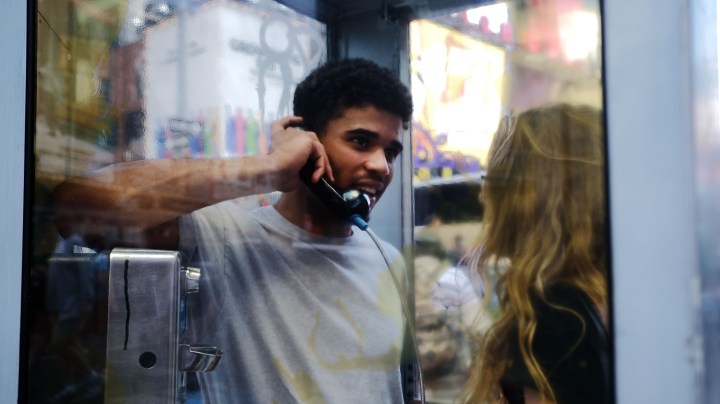This Powerful Installation Uses Phone Booths to Tell the Stories of Immigrants

Jerome Farah stands in a repurposed telephone booth in Times Square listening to artist Aman Mojadidi interactive public art installation 'Once Upon a Place' on June 27, 2017 in New York City. Photo by Spencer Platt/Getty Images News
In a place as chaotic, crowded, and lit up as Times Square, it’s hard to stand out. And yet, Aman Mojadidi’s new installation is making people stop and take notice. Between 45th and 47th streets, Mojadidi’s Once Upon a Place, a piece featuring three phone booths, is making a powerful statement about the experiences of immigrants. According to The New York Times, the phones ring every seven to nine minutes, and if a curious bystander is moved to pick up, he or she will learn about an immigrant’s struggles, their difficulties assimilating, or what it was like leaving their homes.
“The idea of the stories and use of the phone booths were conceived together,” Mojadidi told the NYT. “I was already fascinated with the removal of phone booths and the fact that they were dying out. I’ve used them quite a bit before mobile phones came, so to see them start to go away, I figured you could imagine all the stories that have already been told through phone booths.”
Once Upon a Place – a collaboration between LinkNYC (which preserved the phone booths) and Time Square Arts – is on display until September 5. Mojadidi and his team spent two months preparing the booths for the public. This meant essentially turning them into audio players capable of playing 70 immigrant stories. After Donald Trump won the election, they found it difficult to collect these anecdotes. Immigrants – targeted by the Trump Administration – didn’t trust them. But teaming up with cultural centers, which organized events at spaces where immigrants felt compelled to open up, helped them complete the project.
Mojadidi initially hoped to see Once Upon a Place throughout New York City, but Times Square – a place known to attract a number of international and US-based tourists as well as locals – ended up being a perfect place for the installation.
“It made sense with the notion of what Times Square is – a highly visible, international space,” Mojadidi added. “This issue of immigration has become so politicized. Globally, any sort of major city is built on immigration rather than destroyed by it.”
Head over to The New York Times to listen to some of the audio.